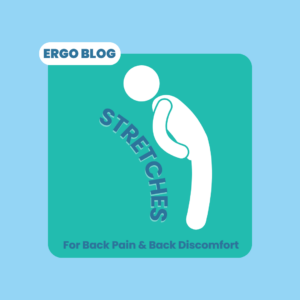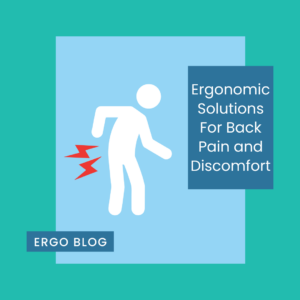Updated: Apr 6, 2023
What is Ergonomics?
Ergonomics came about in the twentieth century as a response to the design and operations problems that were happening with technological developments. The practice of ergonomics developed when scientists came together to solve complex problems. The main disciplines that helped ergonomics emerge were industrial engineering and occupational medicine. Ergonomics is drawn from five core sciences which are psychology, anatomy, physiology, physics (especially mechanics and environmental), and engineering. Other disciplines that have strongly influenced ergonomics are industrial design and systems theory.
At the beginning of the twentieth century, F.W. Taylor developed scientific management and Frank and Lillian Gilbreth developed work study. Both of these concepts were precursors to ergonomics and were developed based on the realization that productivity could be improved by redesigning the way work was done. This was an improvement from only focusing on using better machines.
In 1857, the term ergonomics was coined by Polish scholar, Wojciech Jastrzebowski. The term originated from its Greek roots. “Ergon” meaning work and “namos” meaning principle or law. Jastrzebowski produced Ergonomics: The Science of Work. However, it remained unknown outside of Poland for an extended amount of time. In Britain, the field of ergonomics came to fruition after World War II. In 1949, Murrell reinvented the name. In the United States, a similar discipline emerged, known as human factors. Recently in the United States, the Human Factors Society changed its name to the Human Factors and Ergonomics Society.
So, what is ergonomics exactly? It literally means the laws or study of work. It is the scientific study of the relationship between humans and their working environment. The overall goal is to improve the health, safety, and productivity of activities. The focus of this can either be at work or at home. Ergonomics principles surround us throughout our daily lives. A more in-depth goal of ergonomics would also be to address the challenges of physical and mental stress by creating the just right continuum. This includes optimizing physical and mental stress as it is appropriate for each individual person.
The focus of ergonomics is on design. Analyzing the design of workstations, work processes, work environments, and work cultures are all important to determine the level of safety and productivity in a workplace. Repetitive motions, awkward postures, and heavy forces are areas that are often considered in the design.
Why is Ergonomics effective?
Ergonomics applies numerous strategies to identify and solve problems, it is design based, continuous research is being done to improve the practice, and it is cost effective. Ergonomics implements ten Ergonomics Principles:
- Process – effective work processes are the most important principle as it relates to ergonomics. It is in the center of the remaining principles below. Looking at the entire picture of management/supervision, workforce demographics, records and data review, and human behaviors.
- Position/Support – neutral body and limb positions and body supports. Maintaining a neutral body position throughout the spine and limbs can have a positive impact.
- Movement – regular physical movement can help to improve blood flow and decrease muscle fatigue.
- Material Handling – control manual material handling. Lifting and carrying objects, especially heavier items can put workers at risk for back injuries.
- Reach – work in the reach zone most frequently, especially in the Comfort Reach Zone. This can be accomplished by bending your elbows at 90 degrees and swinging your hands from side to side. The height of the Comfort Reach Zone is about 3-4 inches above and below your elbow.
- Workstation/Tools/Equipment – providing the correct solutions leads to safer, and more productive work areas.
- Training – competency-based training in order to help provide education regarding new tools and/or processes. Obtaining new ergonomic equipment is only half of the process. The other half is knowing how to use it.
- Environment – control exposure to the work environment which includes light, noise, temperature, and ventilation which can affect performance.
- Health/Wellness – address personal health and wellness. By taking care of ourselves, our physical and mental health can function at the highest level. Health and wellness factors include diet and nutrition, body weight control, stress management, smoking cessation, blood pressure control, fluid intake (mostly water and electrolytes), and sleep/rest.
- Feedback – ongoing for continuous improvement. Most likely, the entire ergonomic process will not work perfectly on the first attempt. It takes time with ongoing feedback and follow-up.
At Alter Ergo, we can help you establish an ergonomic program or work alongside you to help improve your current plan. Email us at info@youralterergo.com to set up an appointment.
Check out our YouTube video below for a visual representation of the blog!
Apr 22, 2024
Apr 15, 2024
Apr 9, 2024



